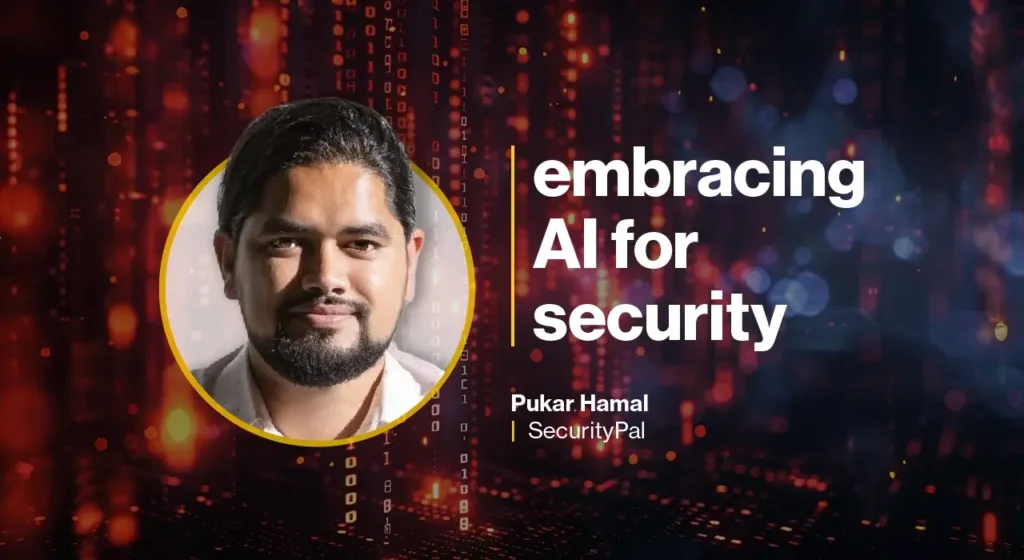Organizations that are increasingly adopting AI face unique challenges in updating AI models to respond to evolving threats while ensuring seamless integration into existing cybersecurity frameworks.
In this Help Net Security interview, Pukar Hamal, CEO of SecurityPal, talks about integrating AI tools in cybersecurity.

What are the key challenges for organizations when integrating AI into their cybersecurity infrastructure?
Businesses are like living organisms, constantly changing every second. Keeping AI models updated is a unique challenge given the dynamic nature of enterprises. Businesses need to understand themselves well to stay competitive with new threats.
Additionally, seamlessly integrating AI systems into cybersecurity frameworks without disrupting ongoing operations requires a great deal of thought and preparation. Organizations are run by people, and no matter how good the technology or framework, the bottleneck of aligning people around these common goals will still remain.
The complexity of this daunting task requires overcoming compatibility issues with legacy systems, addressing scalability to handle massive amounts of data, and requiring cutting-edge technology and skilled human resources to invest large sums of money. This is further complicated by the need to make an investment.
How do we balance the accessibility of powerful AI tools with the security risks they potentially pose, especially when it comes to their misuse?
This is a trade-off between speed and security. When systems become more accessible, organizations can move more quickly. However, it also increases the risk and scope of attack.
This is always a balancing act, and security and GRC organizations need to start with a robust governance framework that establishes clear rules of engagement and strict access controls to prevent abuse. Employing a layered security approach, including encryption, behavioral monitoring, and automated alerts for anomalous activity, can strengthen your defenses. Additionally, increasing the transparency of AI operations through explainable AI techniques allows for better understanding and control of AI decisions, which is essential to preventing abuse and building trust.
Any organization that is large or complex enough must accept that abuse will occur at some point. The key is how quickly you respond, how thorough your remediation strategy is, and how you share that knowledge with the rest of your organization to ensure the same patterns of exploitation don't repeat.
Can you share some examples of advanced AI-powered threats and innovative solutions to counter them?
No technology, including AI, is inherently good or bad. It all depends on how you use it. Indeed, AI is very powerful in speeding up daily tasks, but bad guys could also use her AI to do the same.
Thanks to AI's ability to imitate humans, phishing emails will become more convincing and more dangerous than ever before. Combine this with a multimodal AI model that can create deepfake audio and video, and it's not impossible that her two-factor authentication would be required for all virtual interactions with other people.
What matters is not where AI technology is today, but how sophisticated it will become in a few years if it continues on this same trajectory.
Combating these advanced threats requires equally advanced AI-driven behavioral analytics to identify communication anomalies and AI-enhanced digital content verification tools to identify deepfakes. Threat intelligence platforms that leverage AI to sift through and analyze vast amounts of data to predict and neutralize threats before they occur are another powerful defense.
However, there are limits to the usefulness of the tool. I believe there will be more face-to-face interactions around highly sensitive workflows and data. As a result, individuals and organizations will want more control over every interaction so that they can be seen.
What role does training and awareness play in maximizing the effectiveness of AI tools in cybersecurity?
Training and awareness are important to enable teams to effectively manage and utilize AI tools. They transform a team from a good team to a great team. Regularly updated training sessions keep cybersecurity teams knowledgeable about the latest AI tools and threats, allowing them to leverage these tools more effectively. By expanding awareness programs across your organization, you can educate all employees about potential security threats and good data protection practices, significantly strengthening your organization's overall defense mechanisms.
With the rapid adoption of AI in cybersecurity, what ethical concerns should professionals be aware of, and how can these be mitigated?
Ethical navigation is critical in a rapidly evolving AI environment. Because AI systems often process a wide range of personal data, key concerns include ensuring privacy. Strict compliance with regulations such as GDPR is paramount to maintaining trust. Additionally, the risk of bias in AI decision-making is significant and requires addressing diversity in training datasets and ongoing auditing to ensure fairness.
Transparency about the role and limitations of AI in security systems also helps maintain public trust, ensuring stakeholders are comfortable and informed about how AI is being used to protect their data. can. This ethical vigilance is essential not only for compliance, but also for fostering a culture of trust and integrity within and outside the organization.


